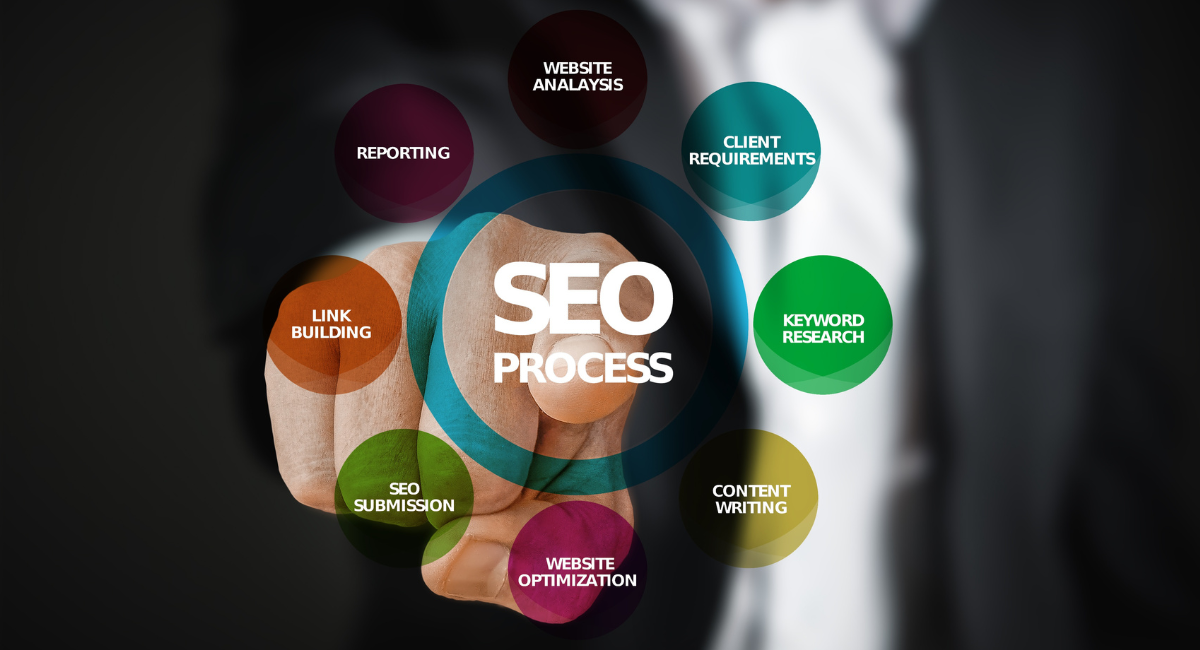Welcome to the world of search engine optimization (SEO), a fundamental aspect of digital marketing that can make or break your online presence. If you’re new to SEO, don’t worry! In this article, we’ll walk you through the basics and provide tips on how to optimize your website for better visibility in search engines. Whether you’re a blogger or business owner, understanding SEO is crucial for driving traffic and reaching your target audience.
What is SEO?
SEO stands for Search Engine Optimization, and it’s all about making your website more visible in search engine results pages (SERPs). In other words, SEO is the practice of optimizing your online content to rank higher in search engines like Google.
The main goal of SEO is to increase organic traffic to your website from search engines. Organic traffic refers to visitors who find you through unpaid search results rather than paid advertising.
To achieve a high-ranking position in SERPs, there are many factors that come into play such as keyword research, on-page optimization, link building, and technical SEO. Keyword research involves finding the right keywords or phrases that people use when searching for something related to your business or niche.
On-page optimization includes optimizing headlines, meta descriptions, images, and internal linking structures in order to make them more relevant and appealing both for users and search engine crawlers.
Link building focuses on improving the quality and quantity of inbound links pointing back at your site while Technical SEO revolves around ensuring that every technical aspect of a website meets with best practices by major search engines.
It’s important for any business looking to establish an online presence today to invest time & resources toward ranking well across various SERPs through strategic planning & execution of their SEO strategy. Here’s a reference to how SEO works.
The Different Types of SEO
When it comes to Search Engine Optimization (SEO), there are different types that businesses need to understand. Each type has its own set of rules and techniques, but they all aim for the same goal: ranking high in search engine results pages (SERPs). Here are some of the different types of SEO:
- On-page SEO – This refers to optimizing individual web pages on your website in order to rank higher and earn more relevant traffic from search engines.
- Off-page SEO – This involves improving your website’s authority by building backlinks, promoting social media engagement, and other external optimization tactics.
- Technical SEO – This includes optimizing your website’s technical elements such as site speed, mobile-friendliness, schema markup, etc.
- Local SEO – If you have a business with a physical location or target local customers, local SEO can help improve visibility within search engine results for people searching locally
- Mobile SEO – this is optimization specifically designed for mobile users so that Google bots can crawl them easily since most searches happen through Mobile devices
By understanding these different types of SEO practices, you will be able to create effective strategies to optimize your website and drive more targeted traffic which ultimately leads to better conversions!
SEO Tools
SEO can be a complicated process, but there are many tools available to help simplify things. These tools fall into different categories, including keyword research, on-page optimization, link building, and analysis.
One of the most important SEO tools is Google Analytics. This tool allows you to track website traffic and user behavior. You can see which pages are getting the most traffic, how long users are staying on your site, and where they’re coming from.
Another useful tool is Google Search Console. This free service allows you to monitor your website’s performance in search results. You can identify crawl errors and other issues that could be hurting your rankings.
Keyword research tools like SEMrush or Ahrefs allow you to find high-volume keywords related to your business niche or industry that people use when searching for information online.
On-page optimization tools like Yoast SEO also come in handy when optimizing webpages with meta descriptions & title tags helping increase click-through rates (CTR) for organic search listings by drawing more attention from potential customers through better presentation of SERP snippets.
Link-building tools such as BuzzSumo can help find influencers who may potentially share relevant content without explicitly asking them beforehand discouraging black-hat techniques that violate Google’s Webmaster Guidelines
Using these SEO tools helps provide insights into how well a website performs in terms of ranking factors while identifying ways for improvement; however, it should never replace human intuition or strategic thinking skills required by professional digital marketers
How to Optimize Your Website for SEO
When it comes to optimizing your website for SEO, there are several factors to consider. First and foremost, you need to ensure that your website has relevant and high-quality content that is valuable to your target audience. This means conducting keyword research and incorporating those keywords naturally into your content.
In addition to content, the structure of your website is also important for SEO optimization. Make sure that your site is easy to navigate with clear and concise menu options. Use header tags (H1, H2, H3) throughout your content hierarchy so search engines can easily understand the topic of each page.
Another crucial aspect of SEO optimization is link building. This involves getting other reputable websites in your industry or niche to link back to yours. The more high-quality backlinks you have pointing toward your site, the higher it will rank in search engine results pages (SERPs).
Keep up with regular updates and maintenance on both the technical side (such as fixing broken links or improving page speed) and the content side (adding new blog posts or refreshing old ones). By consistently improving these aspects of your website, you’ll be well on your way toward achieving optimal SEO success!
Local SEO
Local SEO refers to the practice of optimizing a website or online presence to rank higher in local search results. It is particularly important for businesses that want to attract customers from their local area.
One of the most important factors for local SEO is ensuring that your business information, such as name, address, and phone number (NAP), is consistent across all online directories and platforms.
Google My Business is also an essential tool for improving local SEO. By creating a profile on Google My Business and verifying your location, you can ensure that your business appears prominently in Google Maps and local search results.
In addition to NAP consistency and Google My Business optimization, it’s also important to create localized content on your website. This includes using locally relevant keywords in page titles, meta descriptions, and content.
Getting reviews from satisfied customers can also improve your ranking in local search results. Encourage customers to leave reviews on platforms like Yelp or Google My Business.
Mobile SEO
Mobile SEO is an essential aspect of search engine optimization that focuses on optimizing websites for mobile devices. As more and more people are using their mobile devices to access the internet, it’s crucial for businesses to ensure that their website is optimized for mobile users.
To optimize your website for mobile users, you need to ensure that it has a responsive design. A responsive design allows your website to adjust its layout based on the size of the user’s screen, making it easier to navigate and read on smaller screens.
Another critical factor in mobile SEO is page speed. Mobile users tend to have less patience than desktop users when it comes to loading times, so ensuring that your pages load quickly can significantly impact your rankings.
Additionally, optimizing your content with keywords relevant to both desktop and mobile searches can help boost your visibility in search results across all devices. This means creating content specifically tailored for mobile users while still keeping in mind what desktop users may be searching for as well.
Investing time into implementing effective Mobile SEO strategies can greatly improve a brand’s online presence and drive traffic from organic search results.
International SEO
International SEO is a crucial aspect of any global digital marketing strategy. It involves optimizing your website and content to rank higher in search engines for international audiences, by targeting specific countries, languages, and cultures.
One important factor to consider is keyword research. You’ll need to identify the most relevant keywords that are popular with your target audience in different regions and languages. This will help you optimize your content effectively.
Another key consideration is creating localized versions of your website’s pages or even subdomains for different regions or countries. This helps search engines understand which version of your site should be displayed based on the location of the user searching.
Additionally, it’s important to ensure that all elements of your website such as URLs, meta tags, titles, and descriptions are translated correctly into the targeted language(s) for maximum effectiveness.
By implementing International SEO strategies like these and more, you can successfully reach global audiences through effective localization efforts and achieve a greater online presence worldwide!
E-commerce SEO
E-commerce SEO is a crucial aspect of optimizing an online store for search engines. It involves applying various techniques to improve the visibility and ranking of an e-commerce website on search engine results pages (SERPs).
One way to optimize an e-commerce site is through keyword research. Keyword research helps identify terms and phrases that potential customers are likely to use when searching for products or services related to your business.
Another important factor in e-commerce SEO is optimizing product descriptions, titles, and images. This includes making sure that all content on the website is unique, relevant, and informative.
In addition, building high-quality backlinks from reputable websites can help boost the authority of an e-commerce site in the eyes of search engines. This can be accomplished through guest blogging, social media engagement, or other forms of outreach.
It’s important to keep up with changes in SEO best practices since Google frequently updates its algorithms – this means regularly reviewing your website’s performance metrics like traffic volume over time as well as staying up-to-date with new trends within your industry.
Conclusion
Search Engine Optimization is an essential strategy for any website that wants to rank high on search engine results pages. Understanding the basics of SEO can help you optimize your website and improve its visibility online.
Remember that there are different types of SEO, including local SEO, mobile SEO, international SEO, and e-commerce SEO. Each type requires a unique approach to ensure success.
Using SEO tools can help you track your progress and identify areas where improvements need to be made. Always stay up-to-date with the latest trends in the industry and continue learning about new techniques to improve your website’s rankings.
By following these basic principles of Search Engine Optimization, you can increase traffic to your website, generate leads and boost sales – ultimately helping your business grow.
Visit our SEO Professional Services, Our Business strength SEO Service





